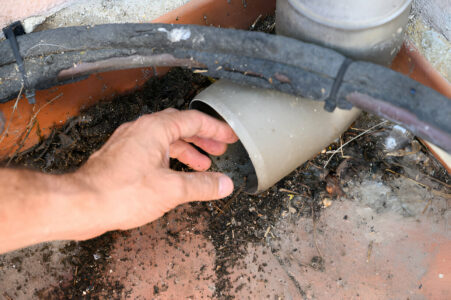Pitch fibre pipes, once a popular choice for drainage systems, are now notorious for their propensity to degrade over time. If you’re dealing with these pipes, it’s crucial to understand how to maintain and repair them effectively. In this comprehensive guide, we’ll explore everything you need to know about pitch fibre pipe repair.
What Are Pitch Fibre Pipes?
Pitch fibre pipes are made from wood cellulose impregnated with coal tar pitch. This combination was initially favored for its lightweight nature and cost-effectiveness.
Importance of Pitch Fibre Pipe Maintenance
Proper maintenance of pitch fibre pipes is vital to prevent serious damage and costly repairs. Neglect can lead to severe plumbing issues that disrupt daily life and damage property.
History of Pitch Fibre Pipes
Origins and Usage
Pitch fibre pipes emerged in the mid-20th century as a cheaper alternative to traditional clay and metal pipes. They were widely used in residential and commercial plumbing systems.
Why They Were Popular
Their lightweight design and ease of installation made pitch fibre pipes an attractive option. They offered a cost-effective solution for large-scale plumbing needs.
Common Problems with Pitch Fibre Pipes
Deformation
Over time, pitch fibre pipes can deform due to external pressure and internal stress. This leads to reduced water flow and blockages.
Blistering
The internal surface of pitch fibre pipes can develop blisters, which cause obstructions and reduce the pipe’s efficiency.
Collapsing
In severe cases, pitch fibre pipes may collapse completely, leading to significant plumbing issues and the need for immediate repair.
Signs You Need Pitch Fibre Pipe Repair
Slow Draining
One of the first signs of a problem is slow-draining sinks, tubs, and toilets, indicating potential blockages or deformations in the pipes.
Frequent Blockages
Recurring blockages can signal that your pitch fibre pipes are deteriorating and need attention.
Unpleasant Odors
Foul smells emanating from your drains often indicate that the pipes are compromised and waste is not being efficiently removed.
DIY vs Professional Repair
Pros and Cons of DIY Repair
While DIY repairs can be cost-effective, they often lack the durability and effectiveness of professional solutions. Improper repairs can exacerbate the problem.
Benefits of Hiring a Professional
Professionals have the expertise, tools, and materials to address pitch fibre pipe issues comprehensively, ensuring long-lasting results.
Inspection and Diagnosis
Tools Used for Inspection
Professionals use specialized tools such as CCTV cameras to inspect the interior of pipes, identifying the exact location and nature of the problem.
How Professionals Diagnose Issues
Detailed inspections allow professionals to diagnose issues accurately, providing a clear plan for the necessary repairs.
Repair Methods for Pitch Fibre Pipes
Pipe Relining
Pipe relining involves inserting a flexible lining coated with resin into the damaged pipe. The resin hardens, creating a new, durable inner pipe.
Pipe Bursting
This method involves breaking the old pipe apart and simultaneously pulling a new pipe into place. It’s ideal for severely damaged pipes.
Sectional Repairs
Spot repairs target specific damaged sections of the pipe, rather than replacing or relining the entire length.
Pipe Relining Explained
How It Works
A liner coated with epoxy resin is inserted into the pipe and inflated. Once the resin cures, it forms a tough, new pipe within the old one.
Advantages of Pipe Relining
Relining is less invasive than traditional methods, requires minimal digging, and extends the lifespan of the existing pipes.
When to Use This Method
Pipe relining is suitable for pipes with moderate damage that are still structurally sound.
Pipe Bursting Technique
Process Overview
A bursting head is pulled through the old pipe, breaking it apart while simultaneously pulling a new pipe into place.
Benefits of Pipe Bursting
This technique is effective for severely damaged pipes and doesn’t require extensive excavation.
Suitable Scenarios
Pipe bursting is ideal for replacing long stretches of pipe that are extensively damaged or collapsed.
Sectional Repair Techniques
Spot Repairs
Spot repairs involve removing and replacing a small section of the pipe that is damaged. This method is cost-effective for localized issues.
How to Choose This Method
Sectional repairs are best for isolated damages where the rest of the pipe remains in good condition.
Cost of Pitch Fibre Pipe Repair
Factors Influencing Cost
The cost of repairs depends on the extent of damage, the method used, and the accessibility of the pipes.
Average Costs for Different Methods
Pipe relining typically ranges from $80 to $250 per foot, while pipe bursting can cost between $60 and $200 per foot. Sectional repairs vary widely based on the specific situation.
Preventive Maintenance Tips
Regular Inspections
Routine inspections can help identify issues early, preventing major repairs down the line.
Proper Usage and Care
Avoid flushing non-degradable items and be mindful of what goes down your drains to prolong the life of your pipes.
Choosing the Right Repair Service
What to Look For
Look for experienced professionals with good reviews and the necessary certifications.
Questions to Ask
Ask about their experience with pitch fibre pipes, the methods they use, and for an estimate of costs.
Environmental Impact of Pipe Repair
Eco-Friendly Repair Methods
Methods like pipe relining are environmentally friendly, reducing the need for excavation and disposal of old pipes.
Long-Term Environmental Benefits
Repairing instead of replacing reduces waste and the environmental footprint associated with manufacturing new pipes.
FAQs
How Long Do Pitch Fibre Pipes Last?
Pitch fibre pipes typically last 40-50 years with proper maintenance, though some may need repairs sooner due to external factors.
Can Pitch Fibre Pipes Be Relined Multiple Times?
Yes, pipes can be relined more than once, depending on their condition and the extent of previous repairs.
What Are the Risks of Ignoring Pitch Fibre Pipe Issues?
Ignoring issues can lead to severe blockages, collapses, and costly damage to your property.
How Do I Know If My Pipes Are Pitch Fibre?
A professional inspection can confirm the material of your pipes. Look for signs like slow drainage and frequent blockages as potential indicators.
Is Pipe Relining Better Than Replacement?
Pipe relining is often less invasive and more cost-effective than replacement, especially for pipes with moderate damage.
Conclusion!!
Maintaining and repairing pitch fibre pipes is essential to avoid major plumbing issues and ensure the longevity of your drainage system. By understanding the common problems and available repair methods, you can make informed decisions and keep your plumbing in top shape.







